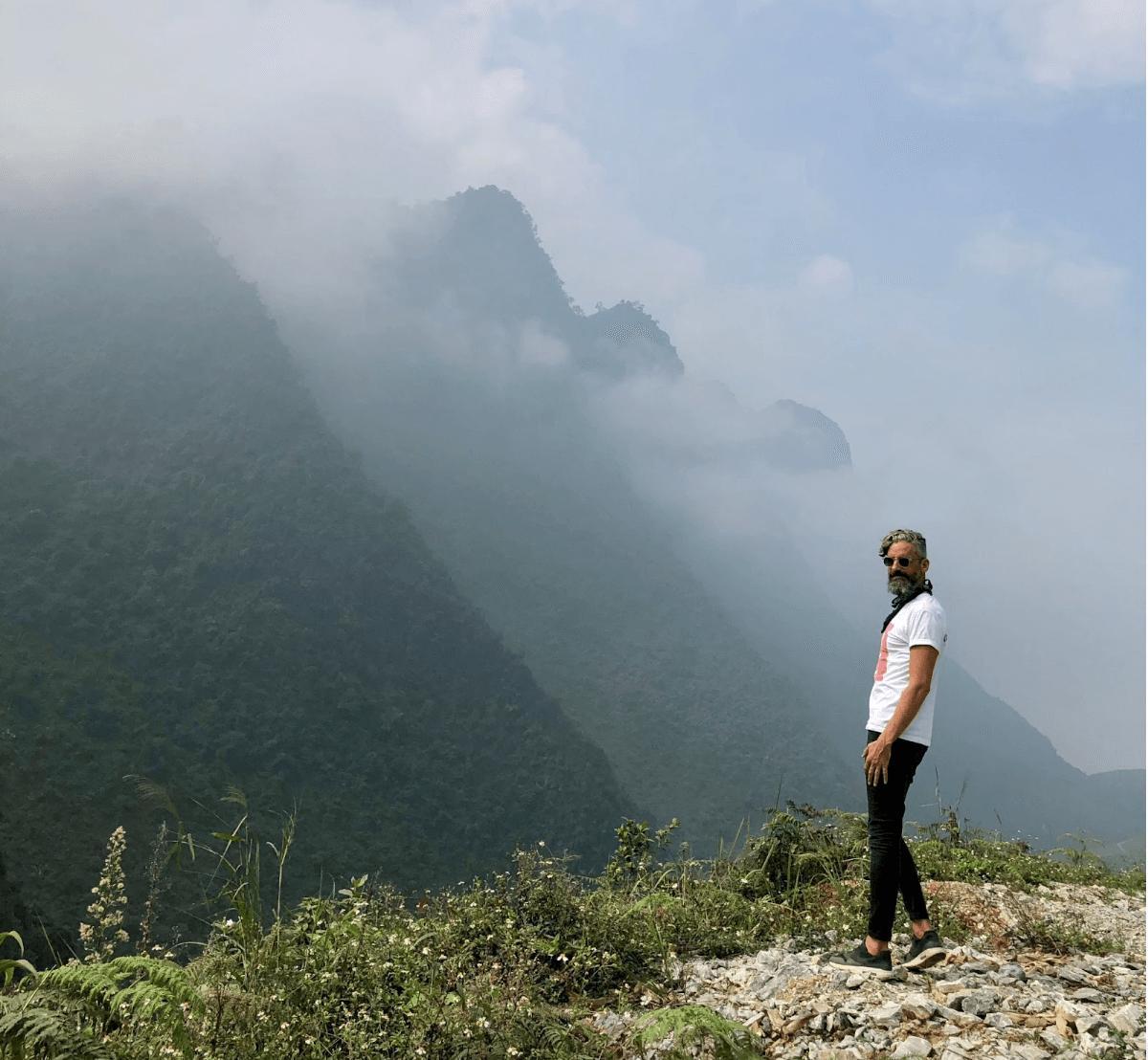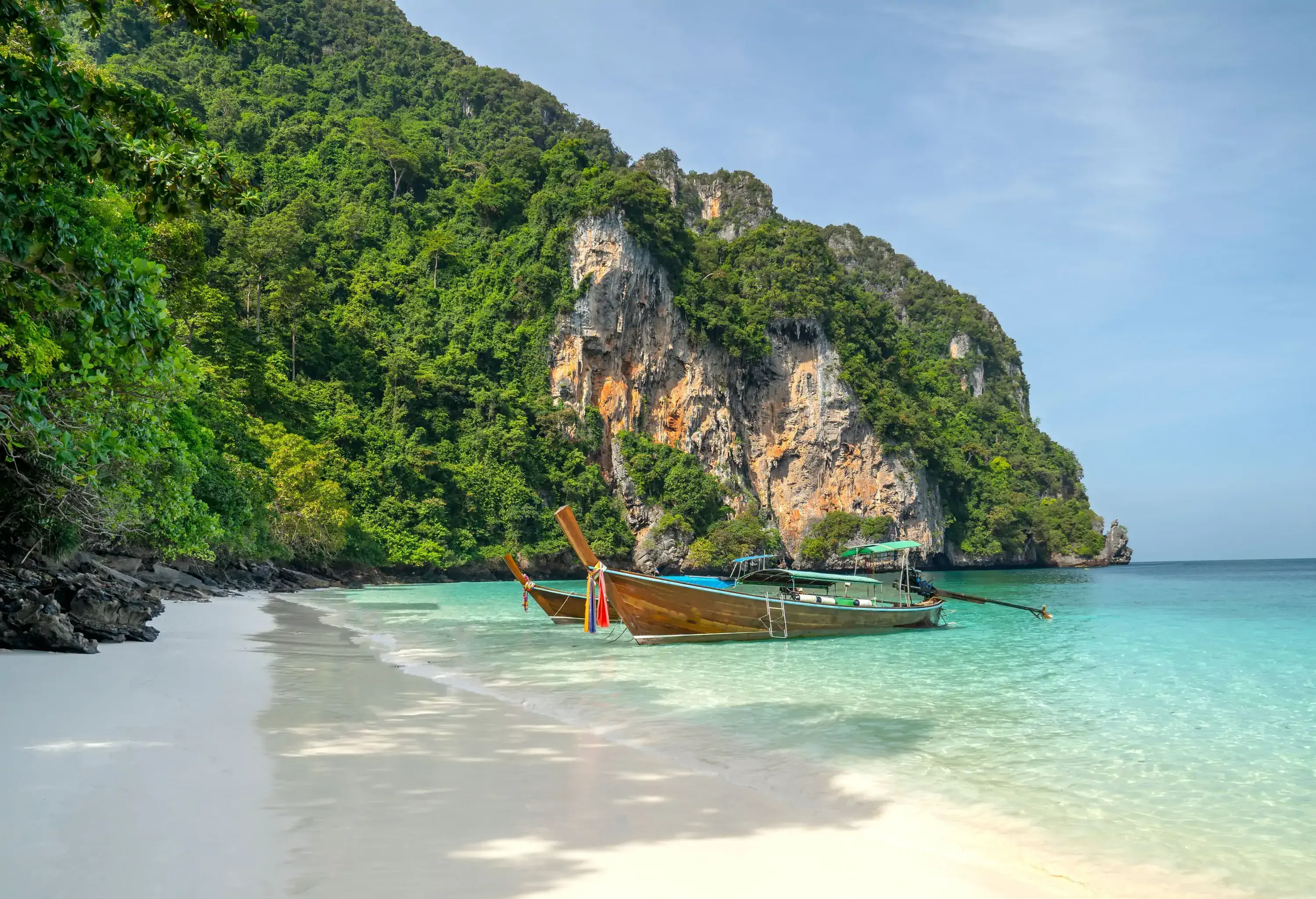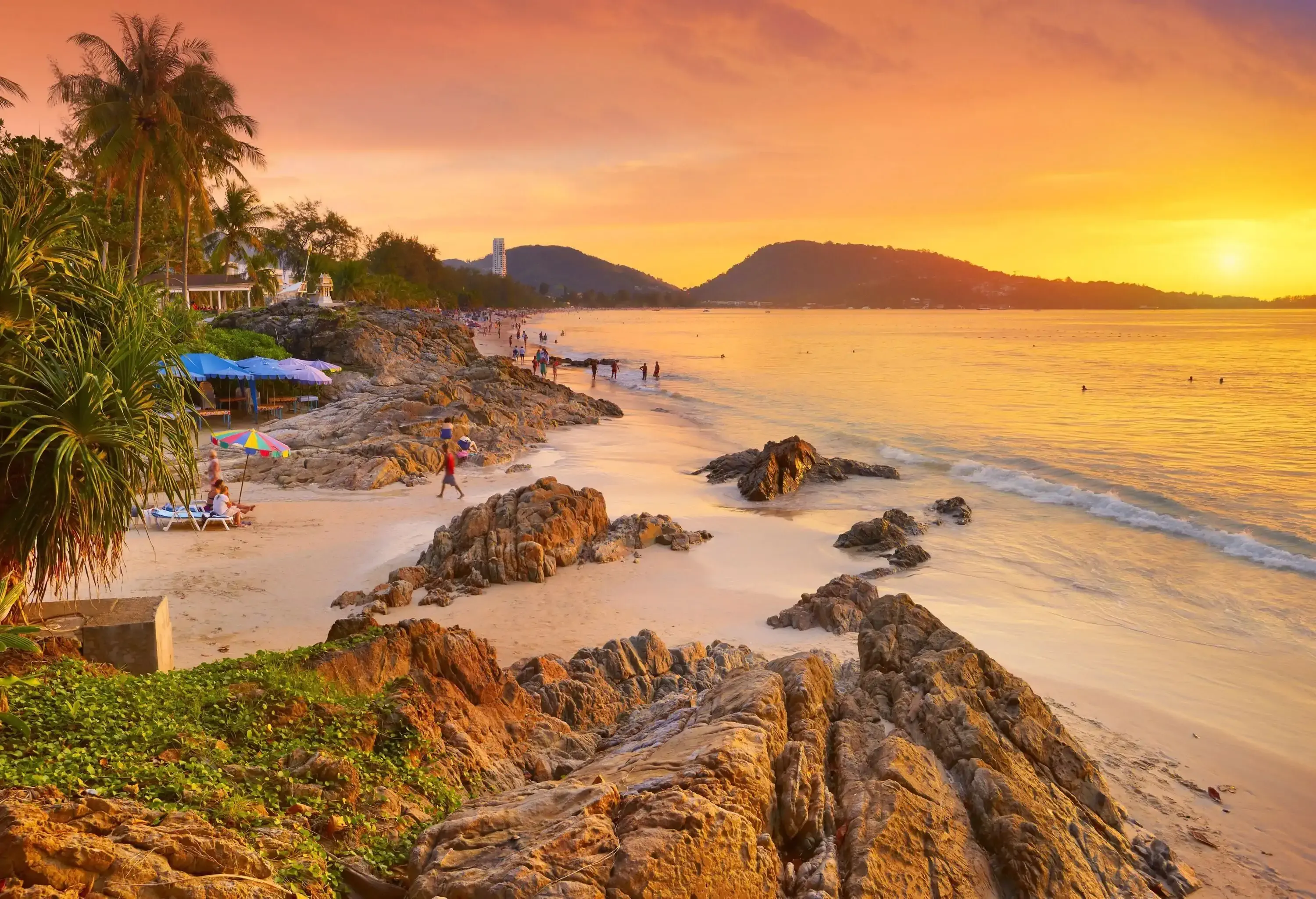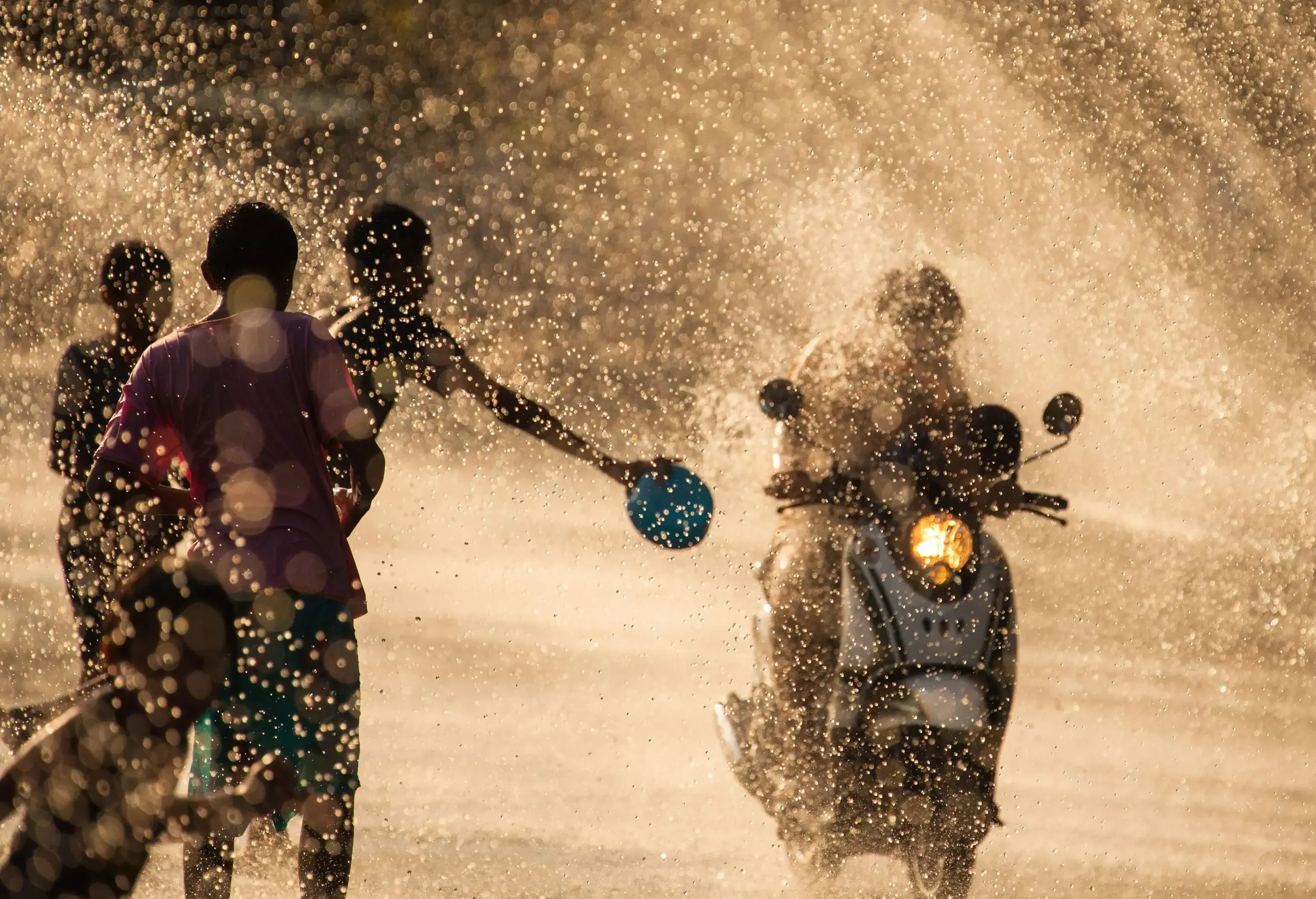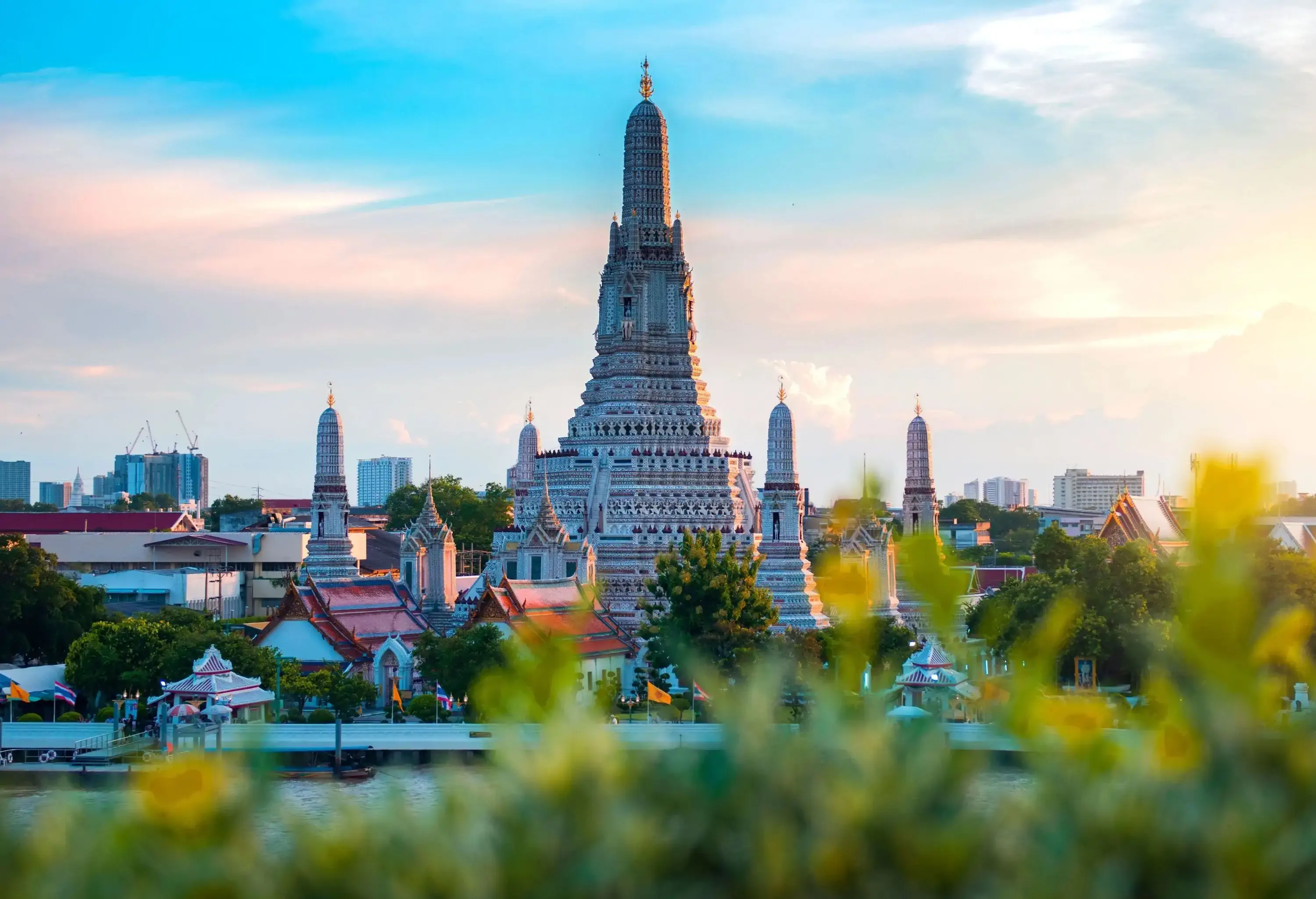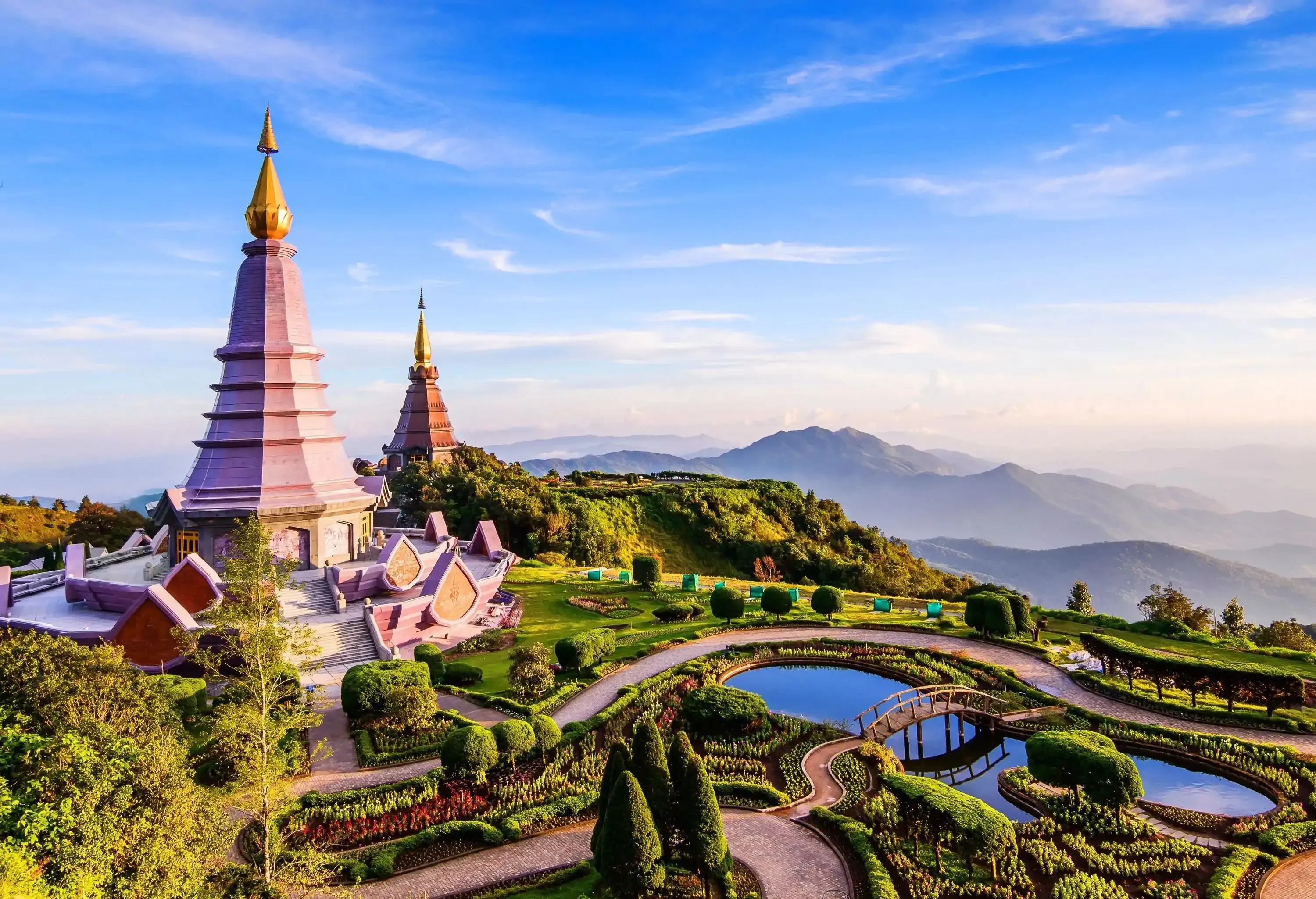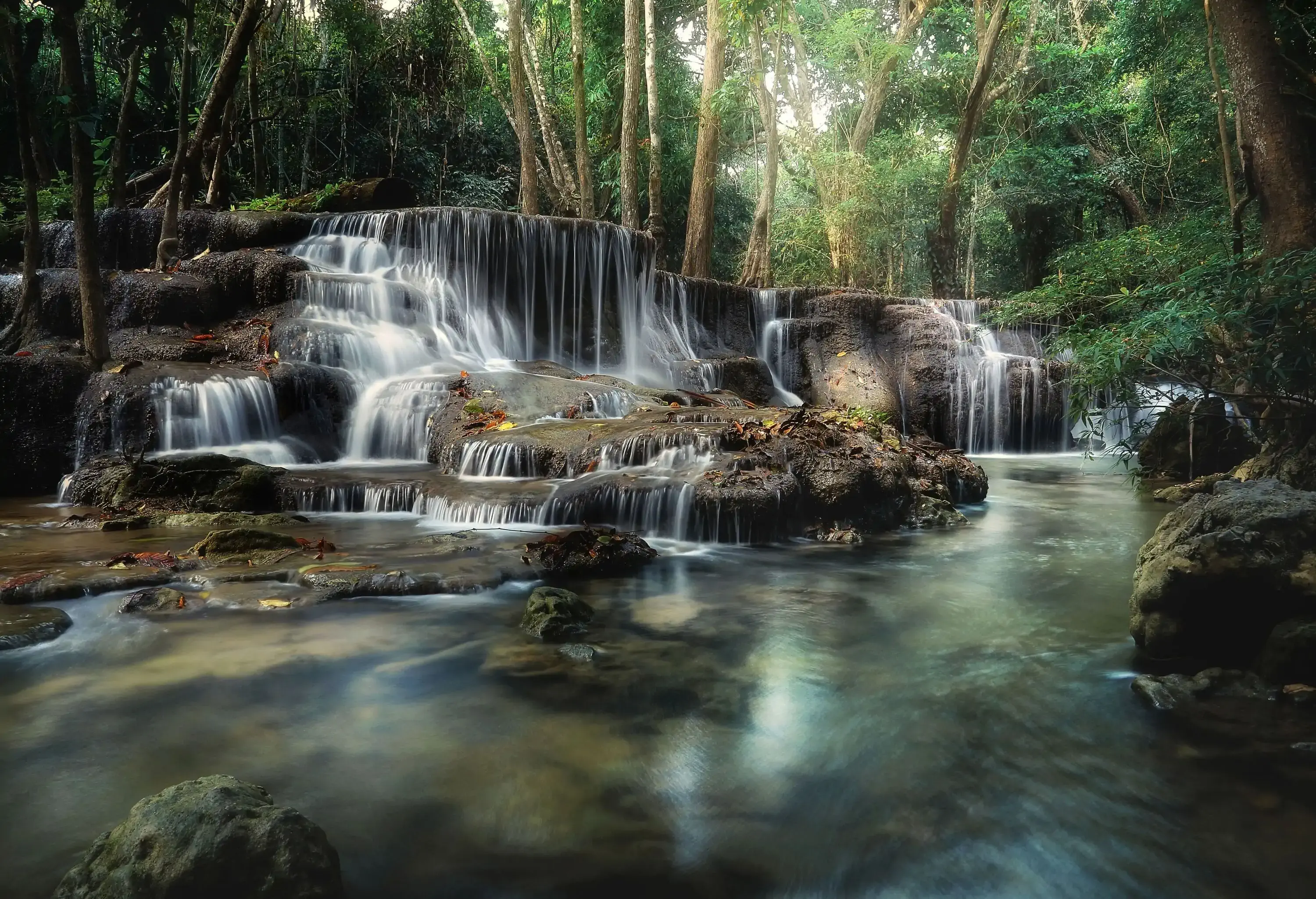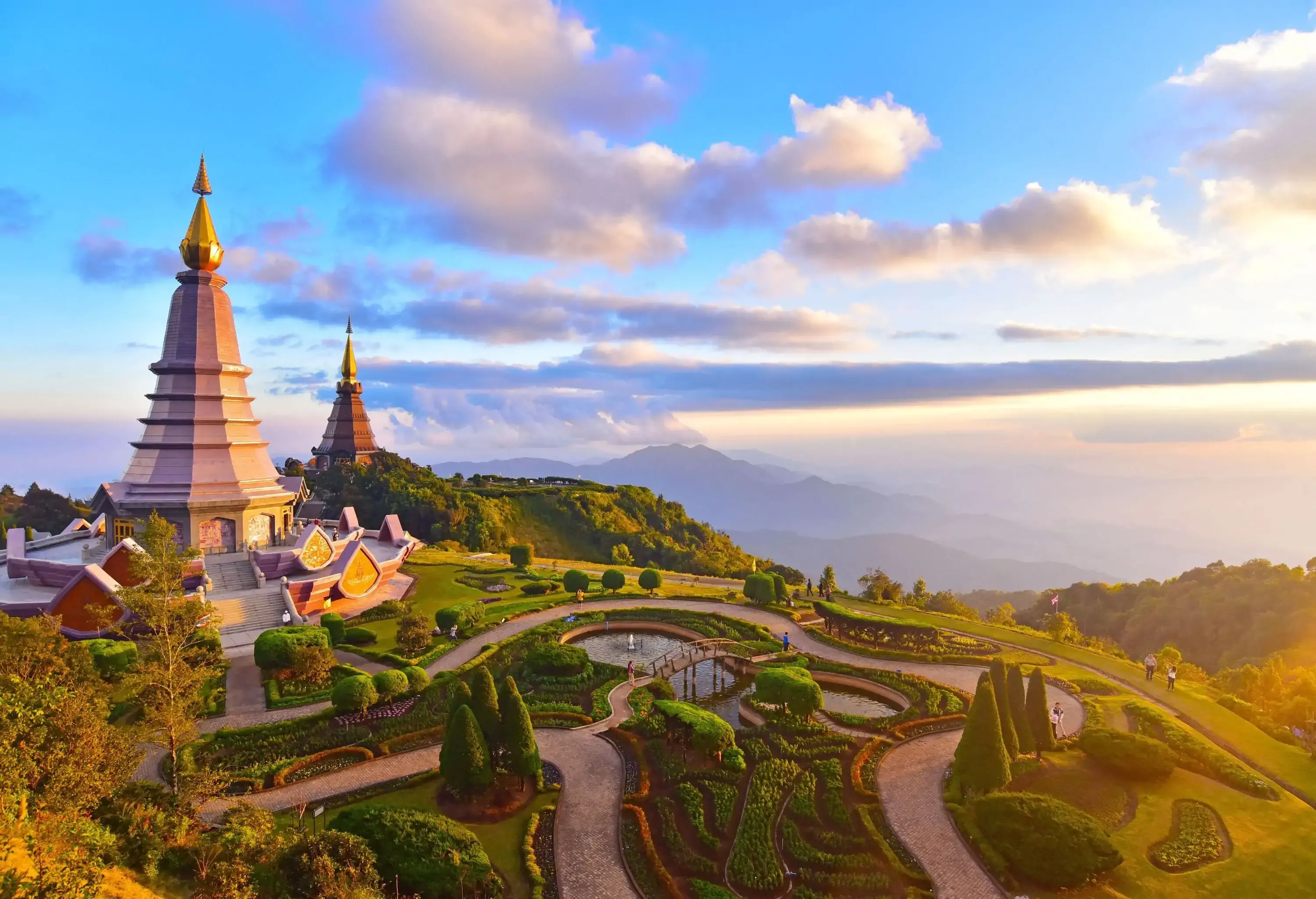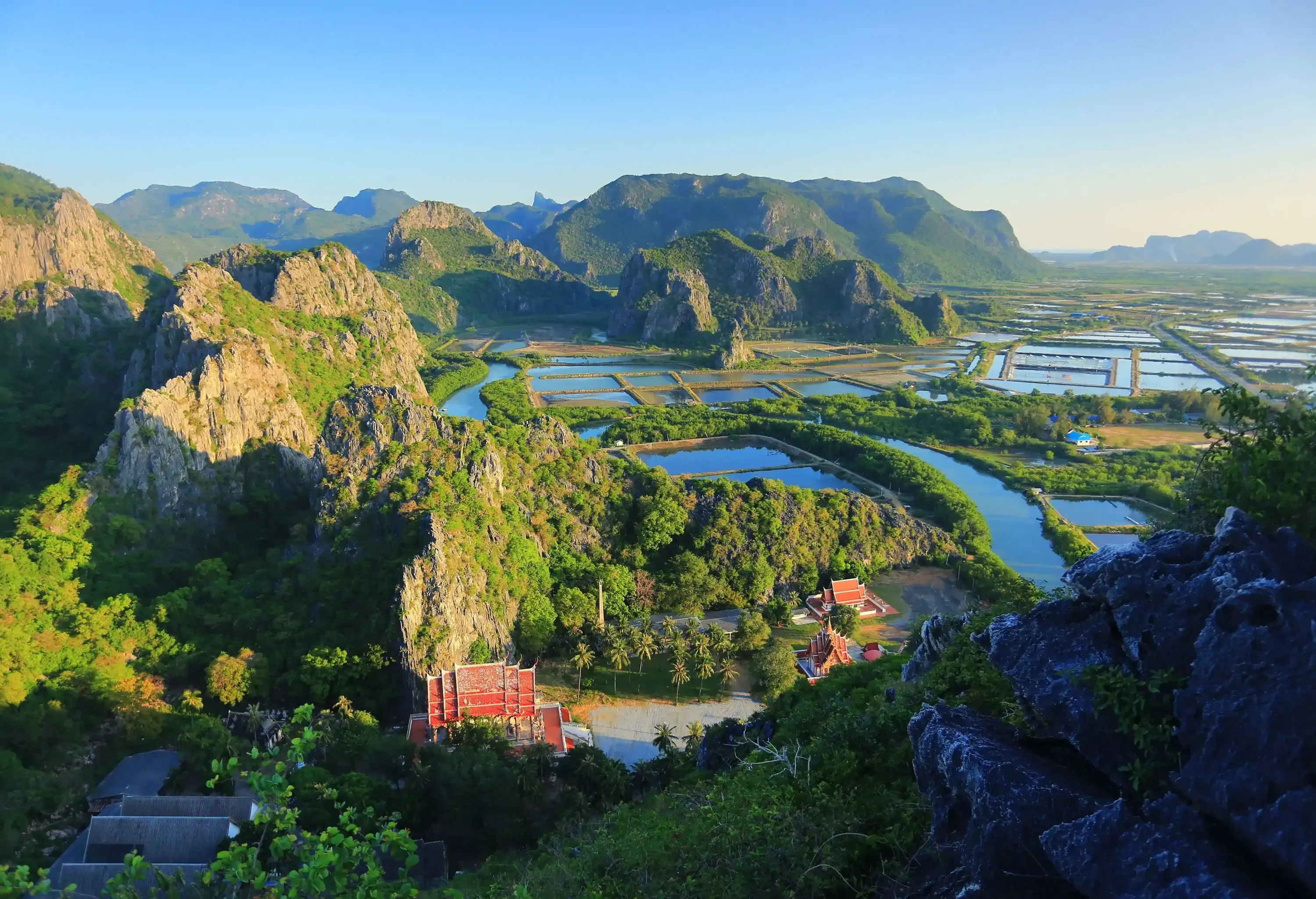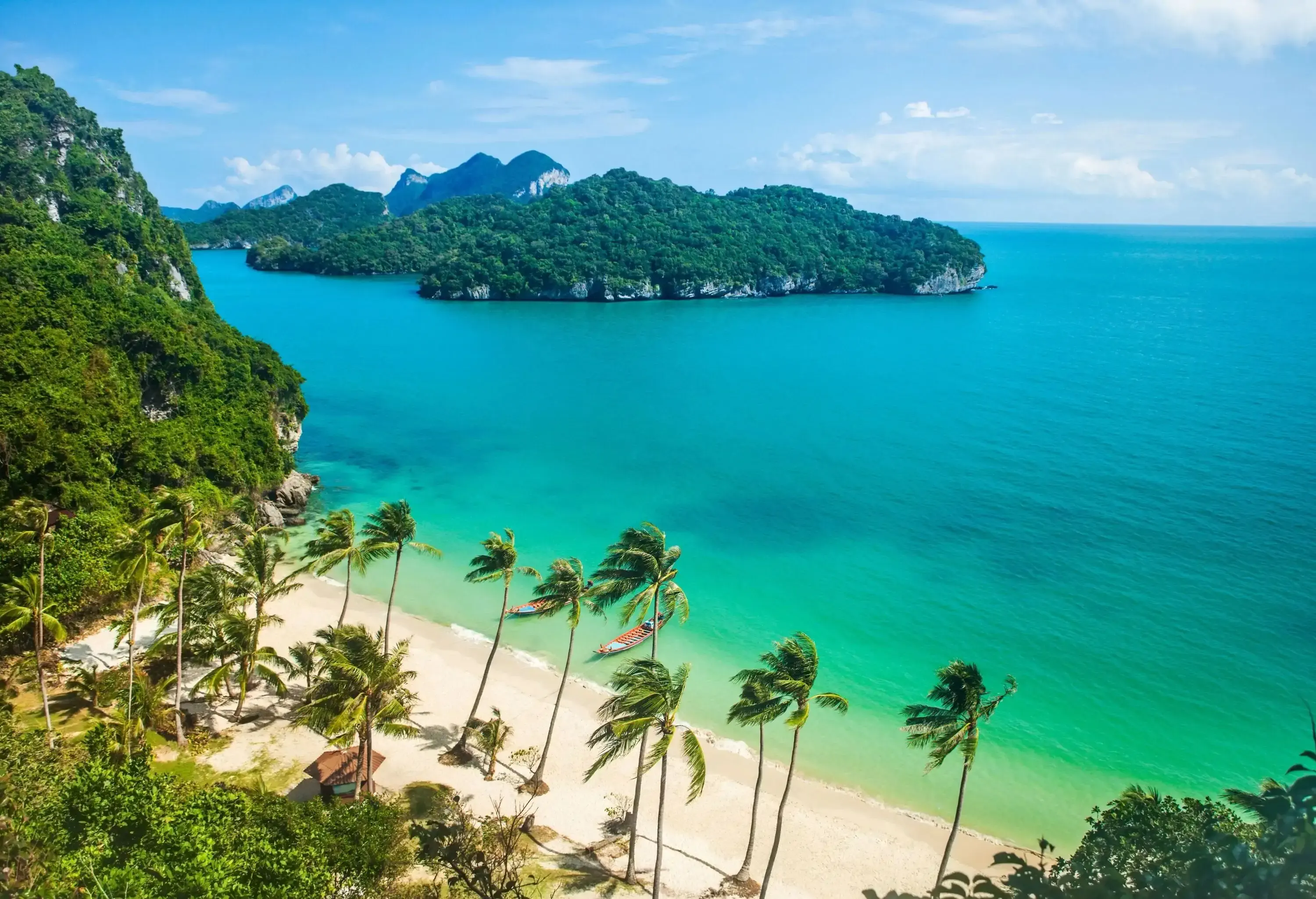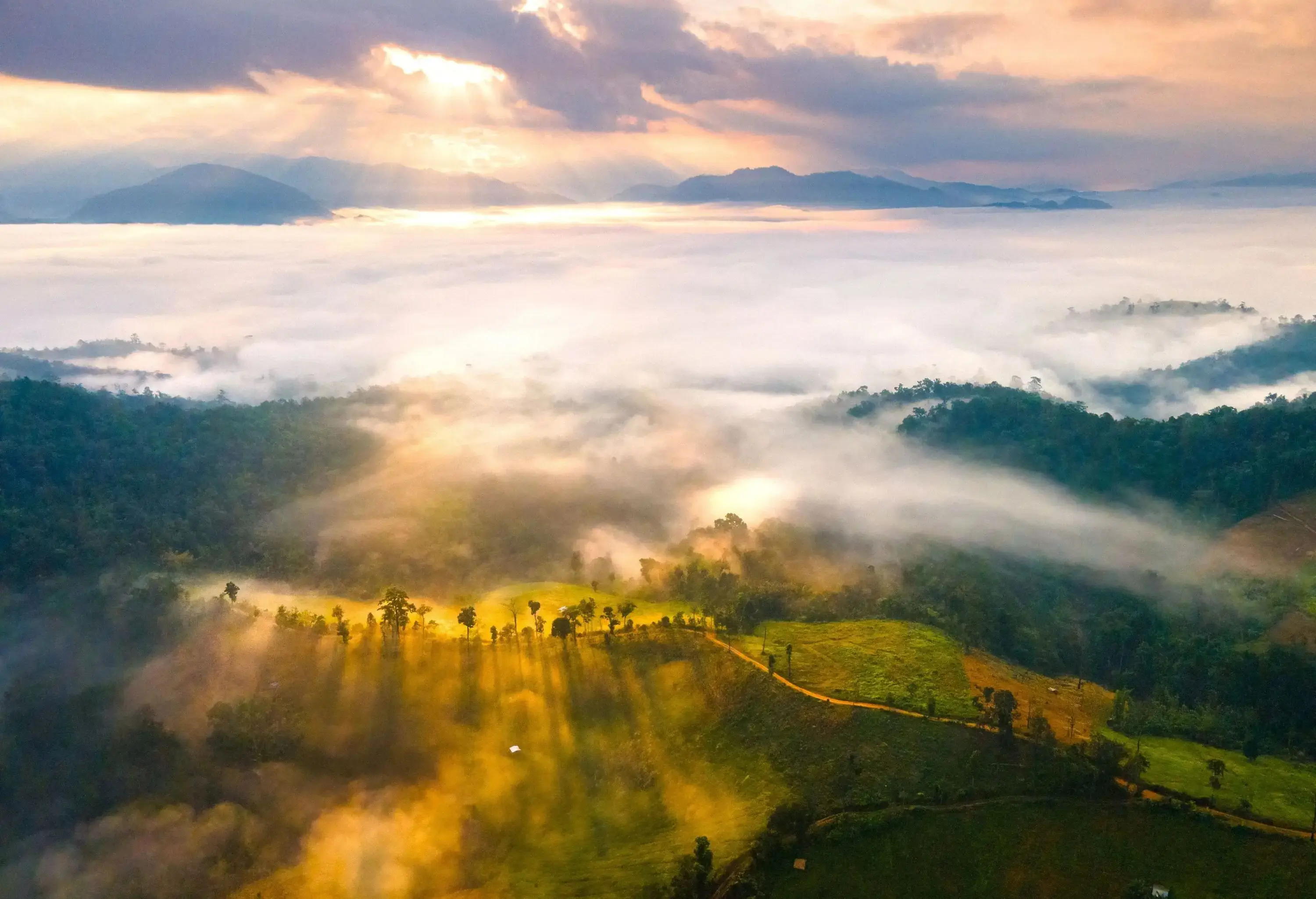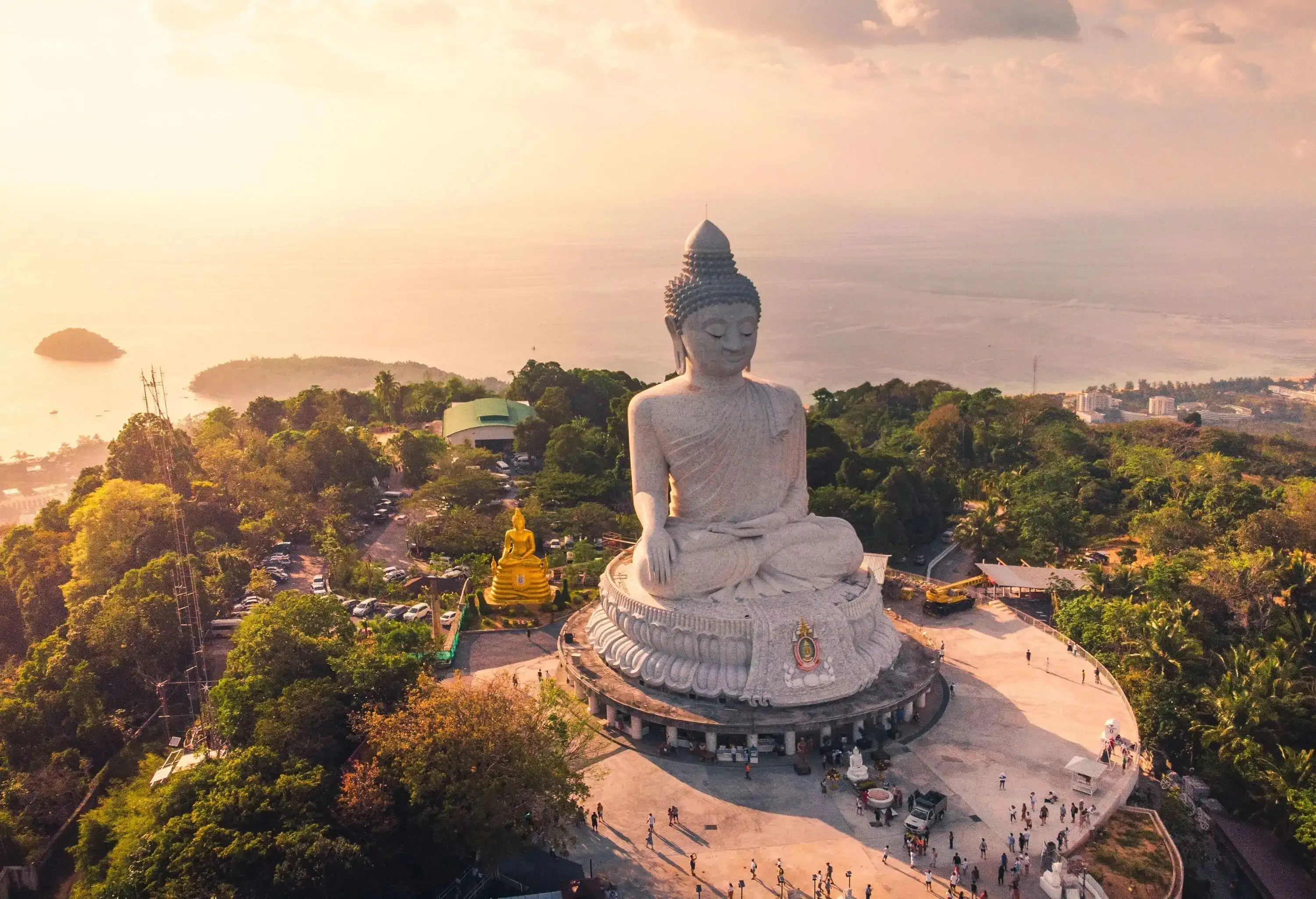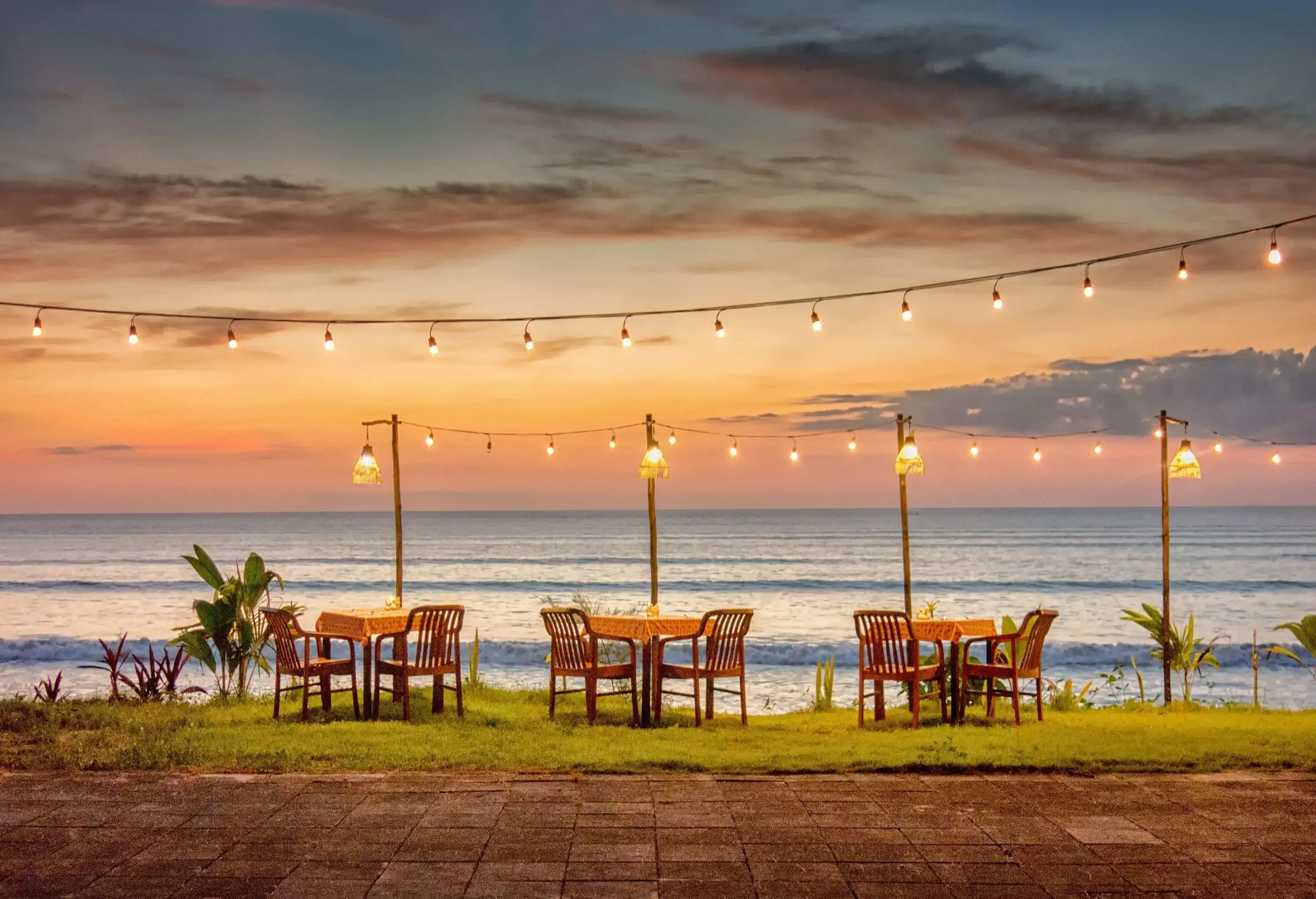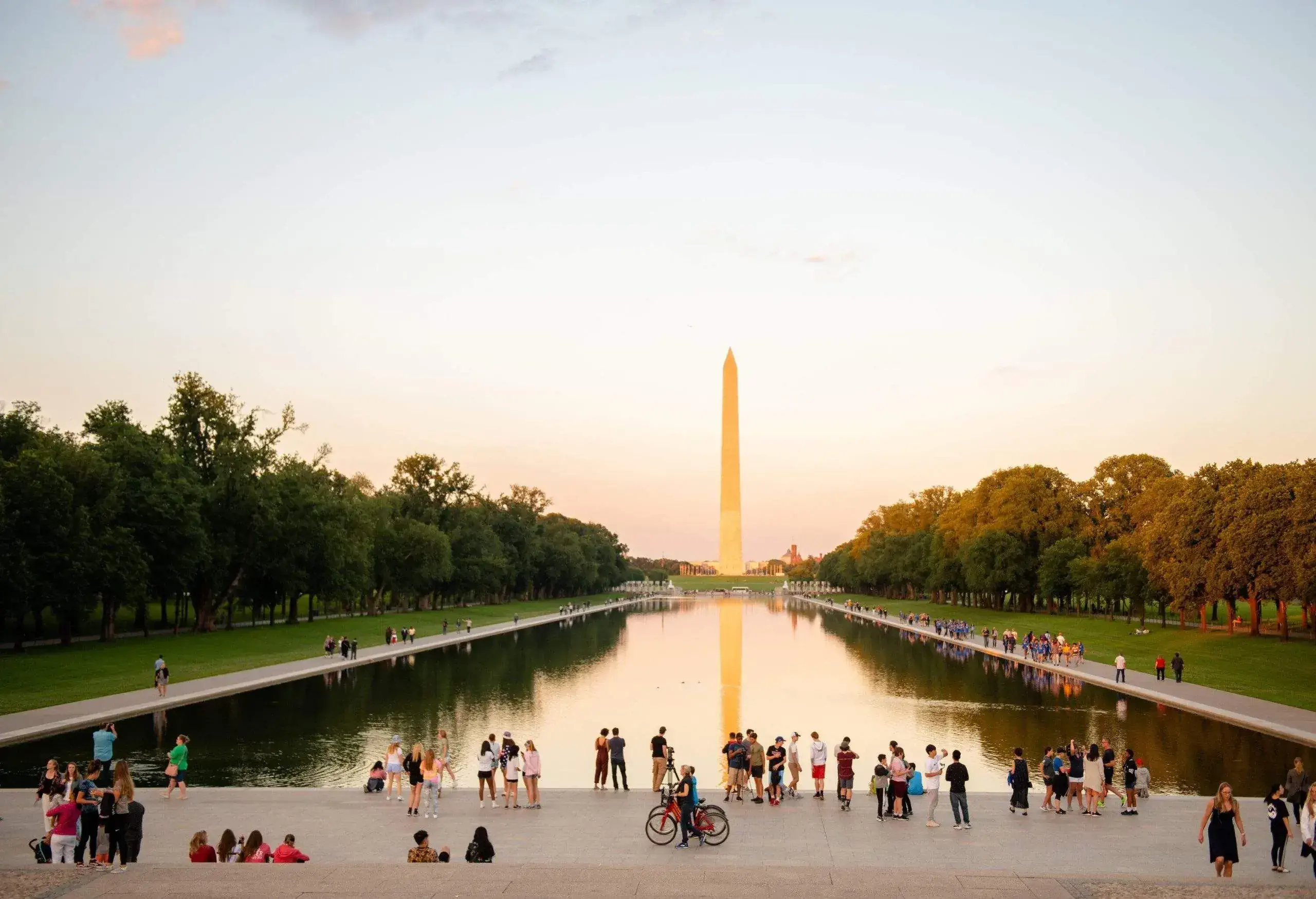With its incredible landscapes, world-class food, and warm welcome, there isn’t a bad time to visit Thailand. Yet, thanks to its location in the tropics, seasonal variations dramatically affect the weather. In this article, I’ll guide you month-by-month to help plan the best time to visit Thailand for where you want to go.
What is the weather like in Thailand?
Thailand is warm and tropical all year round. Temperatures across most of the country range between 25–30 °C, with only the higher-altitude regions in the north dipping below 20 °C. Unlike the four seasons we’re used to, Thailand has three distinct seasons.
Wet season – June to October
This is the low season for tourism thanks to the monsoon rains that drench much of the country. Yet even here, Thailand’s diverse geography creates separate monsoon seasons in the northeast and southwest.
- Northeast monsoon – September to December, when winds from Asia bring heavy rain to the Gulf of Thailand
- Southwest monsoon – May to October, when moist winds from the Indian Ocean bring heavy rain to Thailand’s Andaman Coast
Cool season – November to February
Cool season is peak season in Thailand. Temperatures are at their best, hovering nationwide in the high 20s to low 30s, while humidity is low and the sun shines.
Hot season – March to May
With temperatures climbing into the mid-to-high 30s and humidity peaking, the weather in March to May reduces visitor numbers considerably. The one exception is mid-April, when Songkran, Thailand’s biggest festival, ushers in the Thai New Year with huge crowds.
So when is the best time to visit Thailand?
The best time of year to visit most of Thailand is between November and March. This is dry season, when temperatures are warm, the sun shines, and the Andaman Sea is calm and clear. The exception comes if you’re heading to the lower Gulf of Thailand. Here, island hotspots like Koh Samui and Koh Pha Ngan are best from April to September.
The best places to visit in Thailand month-by-month.
Here, I’ve weighed up flight and hotel prices, weather conditions, and the best events and festivals.
Where to go in Thailand in January.

- Average hotel prices: Krabi £81; Phuket £88; Koh Phi Phi £80
- Average temperature: 27 °C
- Average rainfall: 30–53 mm
There’s nowhere better to enjoy peak high season than Krabi’s coast. Resorts are busy, which drives prices up, but the rewards are worth it. Expect long sunny days and perfect temperatures for beach lazing and inland exploring.
Just offshore, islands including Phuket and Koh Phi Phi come alive with New Year celebrations. Resorts throw huge parties, while local celebrations take place at beaches like Kamala and Bangtao. Altogether calmer, the bath-warm Andaman Sea is magical for swimming, snorkelling, and diving.
Where to go in Thailand in February.
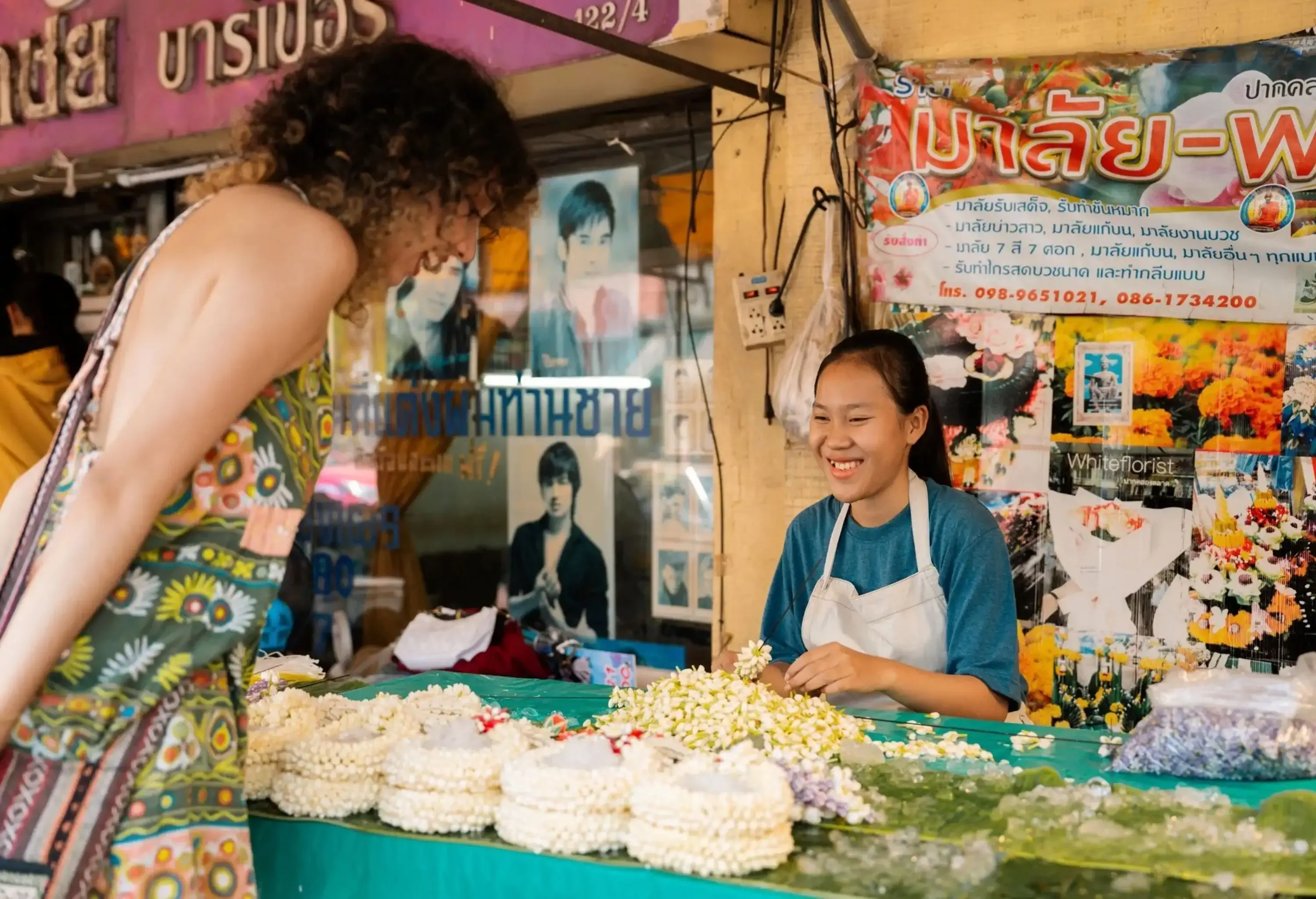
- Average hotel prices: Bangkok £78; Chiang Mai £61
- Average temperatures: 23–28 °C
- Average rainfall: 0–20 mm
February usually rings in the Lunar New Year (although it can fall in late January). In Bangkok, join the celebrations in Chinatown, decked out in red with glowing lanterns, dancing dragons, and lively street parties. With just 20 mm of rain and average temperatures hovering around 28 °C, it’s a good opportunity to enjoy the capital before hot season arrives.
To the north, cooler Chiang Mai celebrates its Flower Festival early in the month. The city is transformed into a colourful canvas of local flora, culminating around Nong Buak Haad Public Park. Don’t linger, though, as February sees the start of burning season. Forest fires and agricultural burning across the region reduce visibility and increase air pollution.
Where to go in Thailand in March.

- Average hotel prices: Koh Mak £54; Khao Lak £92
- Average temperature: 29 °C
- Average rainfall: 53–79 mm
The start of hot season, temperatures climb into the low 30s and crowds begin to thin out. For me, this is peak beach season, as beaches are quieter and it’s not quite sweltering enough to demand shade. While both the Andaman and Gulf coasts glisten, I love the island of Koh Mak further east near Cambodia.
For something completely different, Thailand’s National Elephant Day falls on 13 March. A vital part of the national identity, celebrate and contribute to their conservation with a visit to an ethical park like the Khao Sok Elephant Sanctuary, easy to combine with a beach trip to Khao Lak.
Where to go in Thailand in April.
- Average hotel prices: Chiang Rai £27; Phuket £80; Bangkok £68
- Average temperature: 28–30 °C
- Average rainfall: 70–160 mm
April is the hottest month of the year, with temperatures averaging around 29 °C. What better time to celebrate Songkran, the water festival?
Ushering in the Thai New Year from 13–15 April, Songkran is a Buddhist festival that results in a nationwide water fight. Wherever you go, expect to get soaked!
Chiang Rai in the far north focuses on local traditions and cultures with close-knit community events. For sand between your toes, Phuket’s Patong Beach hosts wild water pistol battles and even wilder parties. But you’ll find me in Bangkok, soaked and happy on Khao San Road. Silom Road is also popular, particularly with LGBTQ travellers.
Where to go in Thailand in May.
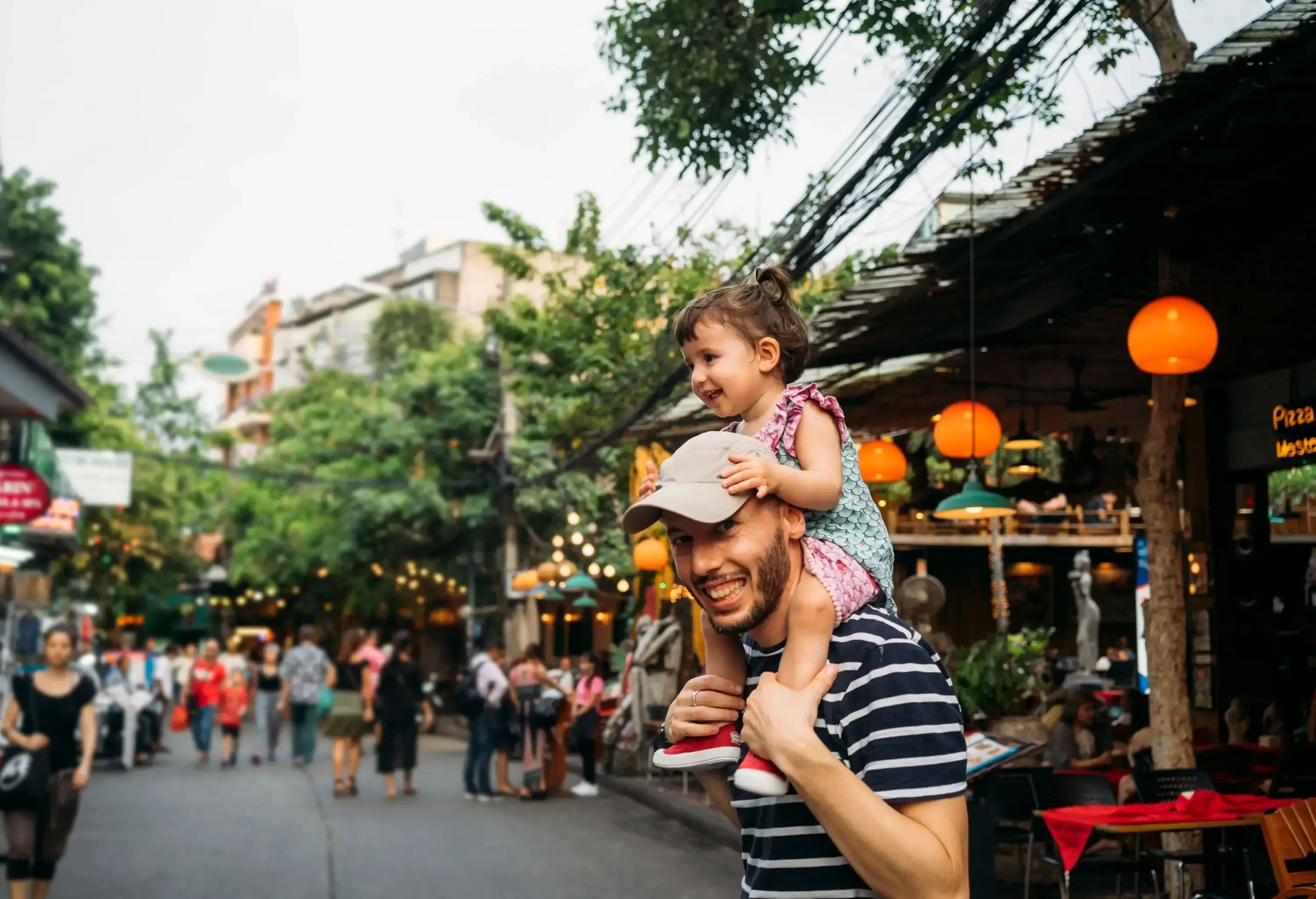
- Average hotel prices: Koh Phi Phi £51; Hua Hin £84
- Average temperature: 28 °C
- Average rainfall: 100–340 mm
May is the shoulder season where hot meets wet. It’s something of a wildcard month, depending on when the rains come and where you are.
Often occurring later in the month, the south monsoon rolls afternoon rainstorms over the Andaman Sea. Some island resorts and services shut for the season and prices drop significantly. If you’re happy to dodge daily rainstorms and enjoy the intermittent sun, it’s about the cheapest time to visit.
Although nowhere is safe from the rain, the northern region of the Gulf coast and resorts like Hua Hin are your best hope for decent weather.
Where to go in Thailand in June.
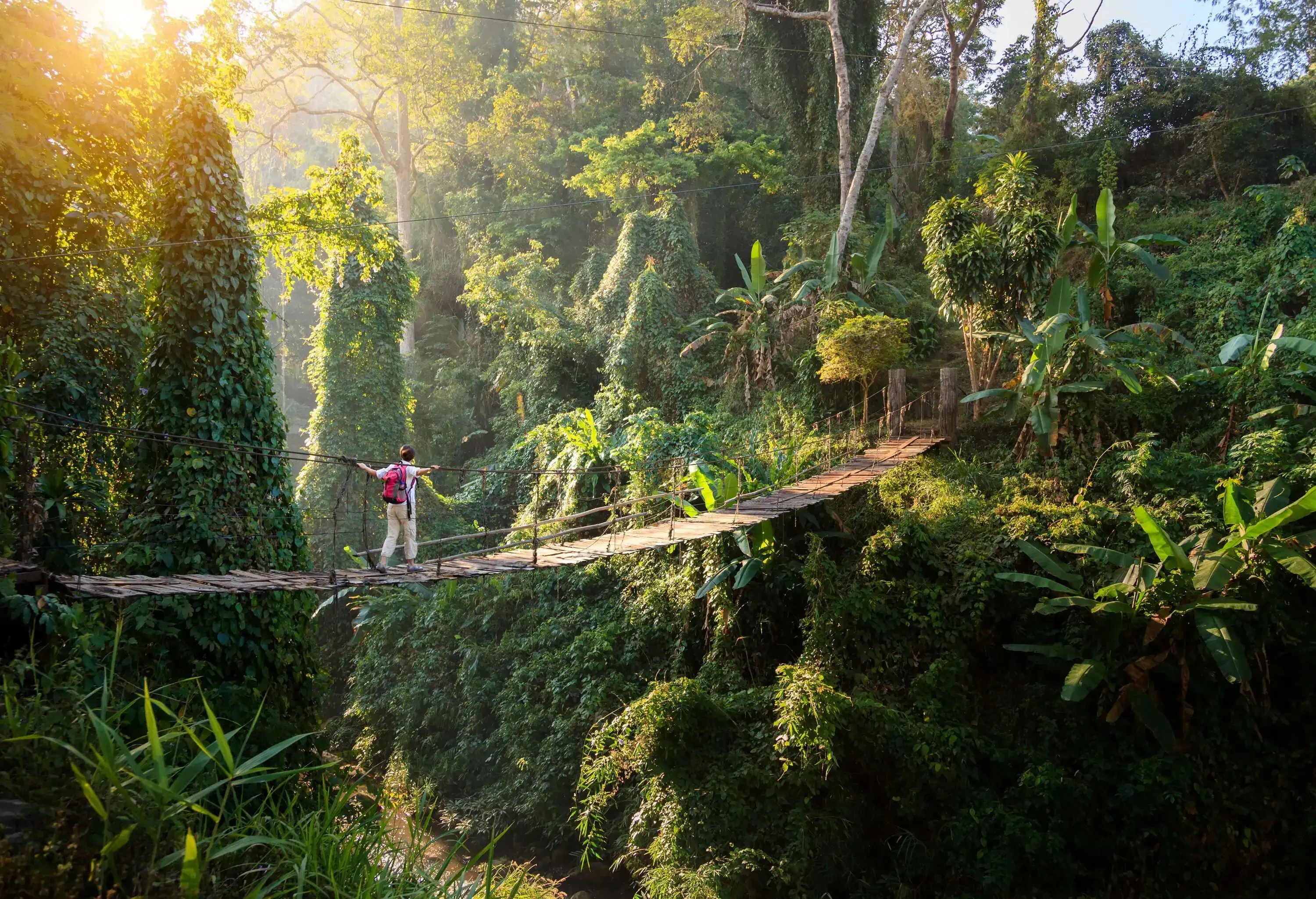
- Average hotel prices: Chiang Mai £57
- Average temperature: 28 °C
- Average rainfall: 130 mm
Temperatures remain hot, but the monsoon eases off a little in June. By this point, the rains have fired up the waterfalls and rivers of the central plains. The natural wonders of Kanchanaburi province are in full force – nowhere more so than Srinakarin Dam and Erawan National Parks.
It’s a good time to enjoy Thailand’s lush northern landscapes before heavier rains return – although you’ll still get wet. Base yourself in lively, picturesque Pai for soggy treks into blooming jungles and epic white-water rafting adventures.
Where to go in Thailand in July.

- Average hotel prices: Koh Samui £103; Koh Pha Ngan £56; Koh Tao £57
- Average temperature: 28 °C
- Average rainfall: 131 mm
It’s more of the same on the mainland in ‘green season’. The lush northern jungles only get greener, wetter, and muddier as the rain keeps falling. This does, however, keep crowds light and prices low.
Thailand’s islands are a mixed bag. Avoid not only the Andaman Sea but also the eastern Gulf islands like Koh Chang and Koh Mak, which can get drenched.
Head instead to the lower Gulf – Koh Samui, Koh Pha Ngan, and Koh Tao – for more sun than rain. Expect crowds to grow as European and Australian tourists embark on their summer holidays.
Where to go in Thailand in August.
- Average hotel prices: Hua Hin £96; Koh Samui £103; Koh Pha Ngan £73; Koh Tao £58
- Average temperature: 28 °C
- Average rainfall: 80–106 mm
The peak of monsoon season, most of mainland Thailand is at its wettest in August.
The eastern Gulf coast avoids the worst showers. To its north, Hua Hin is a great base for beaching in the sun and day trips to the wonderful Sam Roi Yot National Park. With average temps of 28 °C and just 80 mm of rain, it’s drier than anywhere else.
This is about the best time to visit Thailand’s southern Gulf island beaches. Prevailing westerly winds bring long sunny days and short showers. Expect it to be busy with hotel prices at their annual highest across Koh Samui, Koh Pha Ngan, and Koh Tao.
Where to go in Thailand in September.
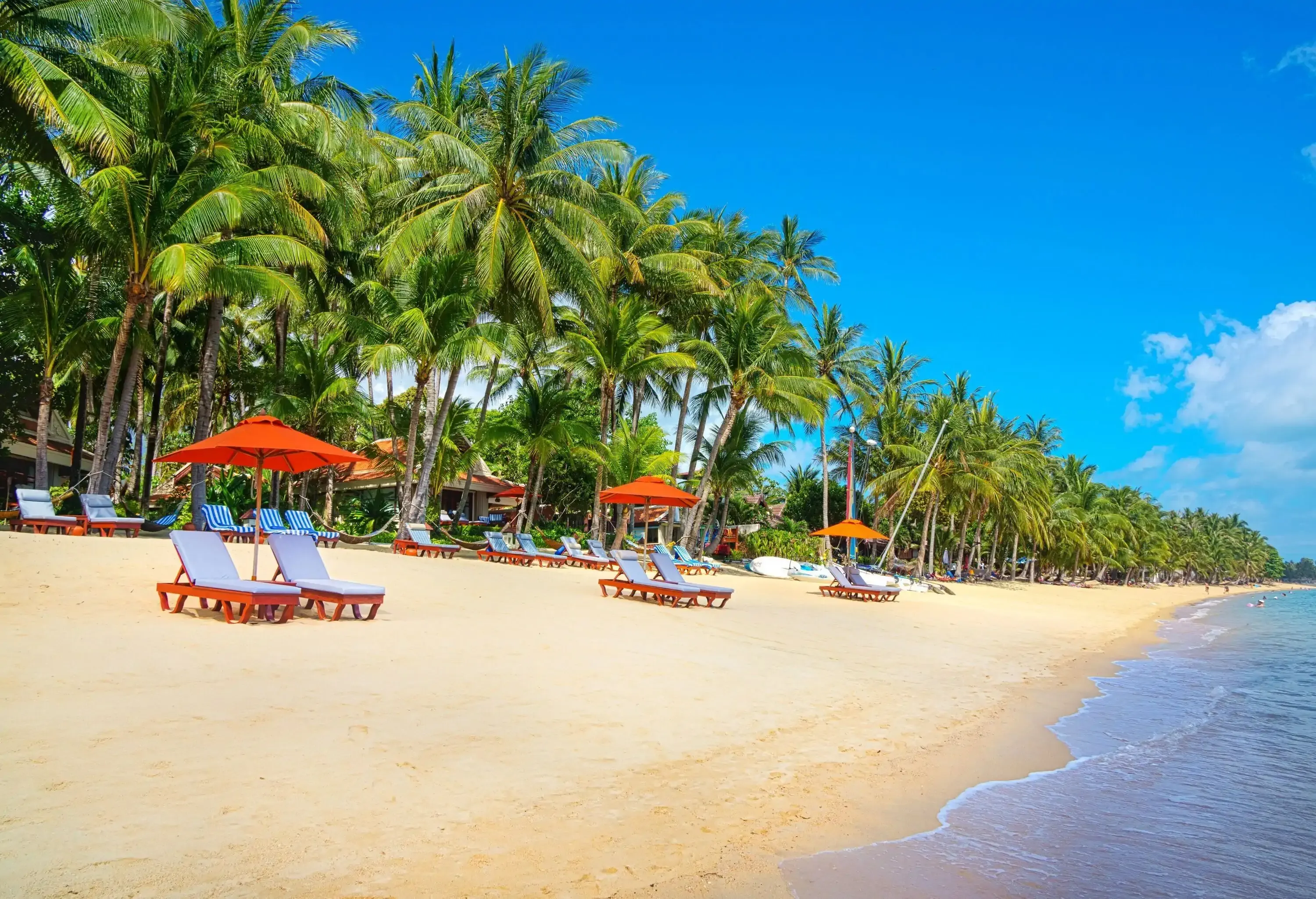
- Average hotel prices: Bangkok £75; Koh Pha Ngan £56
- Average temperature: 28 °C
- Average rainfall: 113–320 mm
In September, the northeast monsoon begins to hit the Gulf of Thailand. However, if it starts late, Koh Samui and Koh Pha Ngan can still have great weather for much of the month.
The Andaman coast still gets absolutely drenched at this time of year. Phuket sees an average 410 mm of rainfall in September! Bangkok is also at its wettest. But with so much to do under cover and low flight and hotel prices, I still think it’s a great time to visit.
Where to go in Thailand in October.
- Average hotel prices: Chiang Mai £65; Udon Thani £25
- Average temperature: 26–27 °C
- Average rainfall: 80–130 mm
Thailand’s northern regions glow as rains recede, leaving a landscape as rich and verdant as it gets. Temperatures and humidity levels start to drop, while crowds are yet to return in significant numbers. Chiang Mai and Pai are still relatively quiet and quite lovely.
Udon Thani in the northeast dodges much of the remaining rain. In neighbouring Nakhon Phanom, October traditionally sees the Lai Reua Fai festival take place. Held following Awk Phansa – the end of the wet season – illuminated boat processions sail serenely down the Mekong River in honour of the Buddha.
Where to go in Thailand in November.

- Average hotel prices: Phuket £88; Chiang Mai £61
- Average temperature: 24–27 °C
- Average rainfall: 40–200 mm
November sees the Andaman coast and its islands spring back to life. Rainfall eases (though showers are still frequent) and resorts and services slowly reopen. Considered the shoulder season, there are great deals to be found on Phuket flights and hotels.
Conversely, the southern Gulf islands are in the grip of wet season with regular torrential downpours.
It’s a great month for festivals. Loy Krathong, the festival of lights, pays homage to the goddess of water with flotillas of candles launched nationwide. There’s nowhere better to enjoy it than in Chiang Mai, where you can also celebrate the incredible Yi Peng Lantern Festival.
Where to go in Thailand in December.
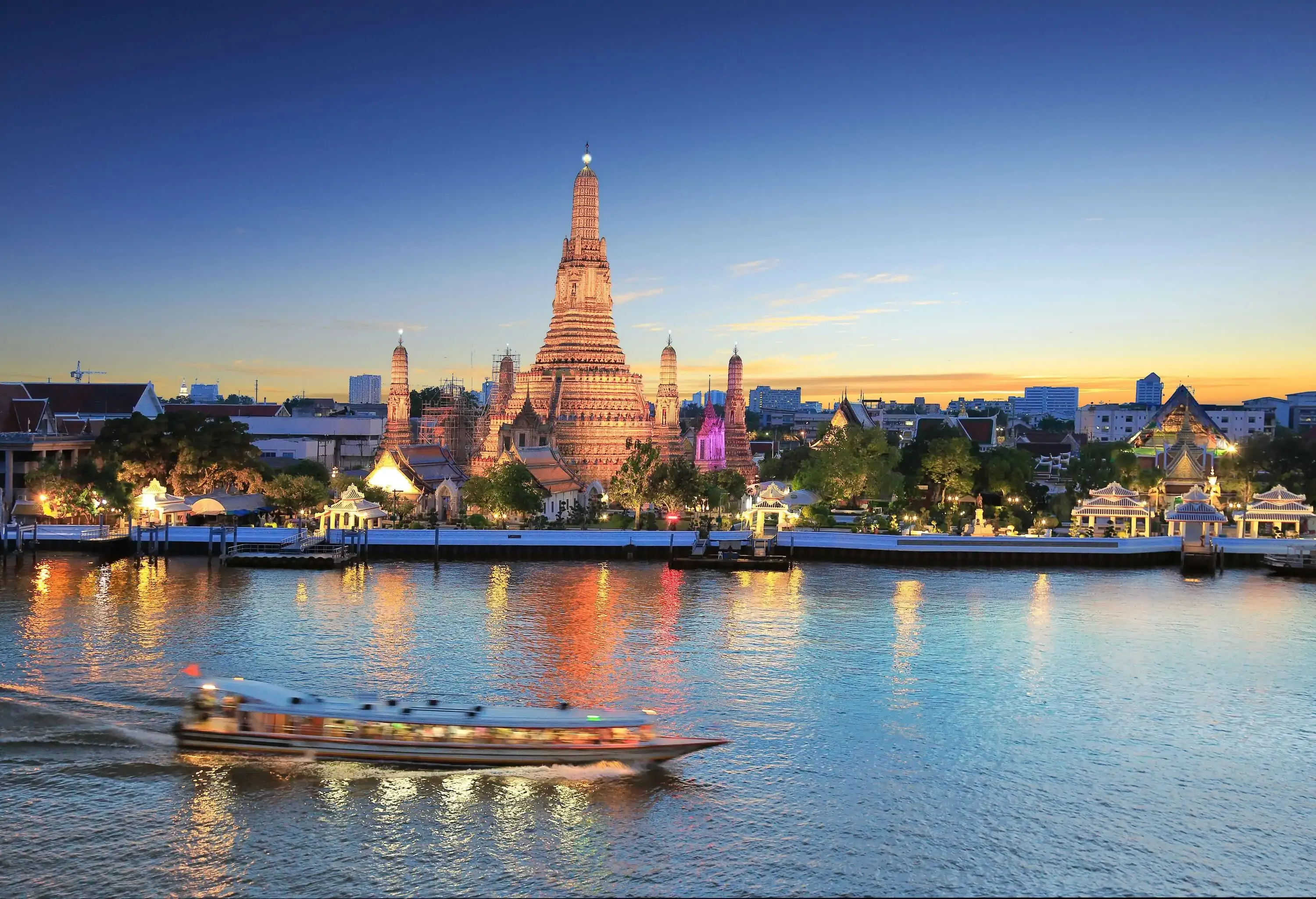
- Average hotel prices: Phuket £108; Koh Lanta £62; Koh Phi Phi £84; Bangkok £95
- Average temperature: 27 °C
- Average rainfall: 40–50 mm
With Christmas looming, expect huge swathes of the country to be busy in December. It’s easy to see why – great temperatures, very little rain, and landscapes glowing from the lifegiving monsoons.
It’s the best time to visit Phuket, Koh Lanta, Koh Phi Phi, and the other Andaman islands. Skies are blue, waters clear, and beaches busy. Expect high season prices, and book well in advance for Christmas and New Year.
For me, it’s also the best time to visit Bangkok. Dry, warm but not hot, and bedecked in festivity and good will, its streets and monuments never look better.
Flight prices are based on flight searches made on KAYAK & associated brands in the period between 13.08.2023 and 13.08.2025 for flights with a departure between 01.01.2024 and 31.12.2025 from any UK airport. All prices are average for Economy, return tickets. Prices may vary and savings cannot be guaranteed. Percentages for changes in searches are approximate.
Hotel prices are on hotel searches made on KAYAK & associated brands in the period between 13.08.2023 and 13.08.2025 for travel days between 01.01.2024 and 31.12.2025. All prices are average for 1 night in a double room. Prices may vary and savings cannot be guaranteed.
Weather data is pulled from a third-party site, Weatherbase, and has not been verified by KAYAK. Monthly average temperature and precipitation data are based on historical insights from the past 102 years. Weatherbase data is updated in real time from the US Census Bureau and other databases worldwide.


